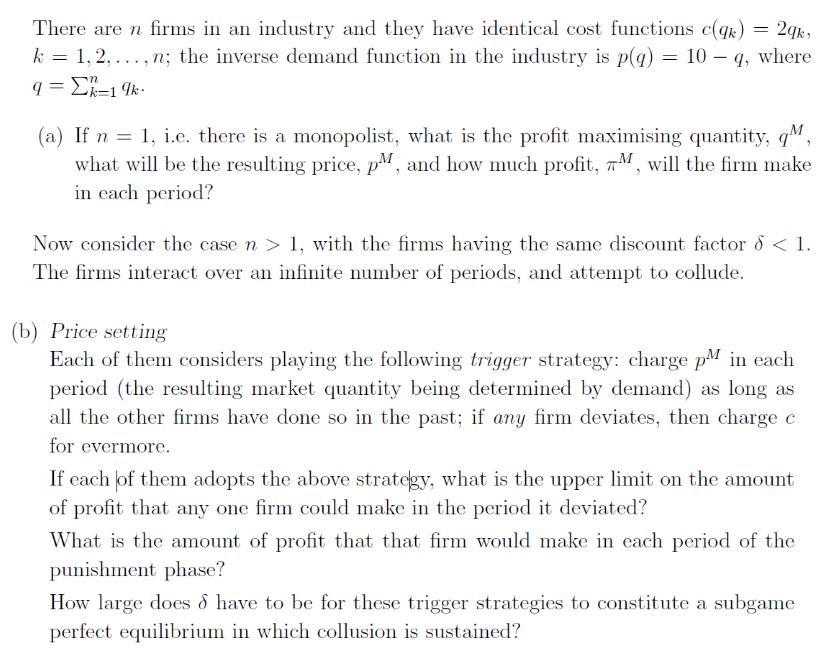Answered step by step
Verified Expert Solution
Question
1 Approved Answer
There are n firms in an industry and they have identical cost functions c(qk) = 2qk, k = 1,2,...,n; the inverse demand function in

There are n firms in an industry and they have identical cost functions c(qk) = 2qk, k = 1,2,...,n; the inverse demand function in the industry is p(q) = 10q, where q=k=19k- (a) If n = 1, i.e. there is a monopolist, what is the profit maximising quantity, q, what will be the resulting price, pM, and how much profit, 7, will the firm make in each period? Now consider the case n> 1, with the firms having the same discount factor d < 1. The firms interact over an infinite number of periods, and attempt to collude. (b) Price setting Each of them considers playing the following trigger strategy: charge p in each period (the resulting market quantity being determined by demand) as long as all the other firms have done so in the past; if any firm deviates, then charge c for evermore. If each of them adopts the above strategy, what is the upper limit on the amount of profit that any one firm could make in the period it deviated? What is the amount of profit that that firm would make in each period of the punishment phase? How large does & have to be for these trigger strategies to constitute a subgame perfect equilibrium in which collusion is sustained?
Step by Step Solution
There are 3 Steps involved in it
Step: 1
a Monopolist Case n 1 The profitmaximizing quantity for a monopolist is determined by setting marginal cost equal to marginal revenue Given Cost funct...
Get Instant Access to Expert-Tailored Solutions
See step-by-step solutions with expert insights and AI powered tools for academic success
Step: 2

Step: 3

Ace Your Homework with AI
Get the answers you need in no time with our AI-driven, step-by-step assistance
Get Started


